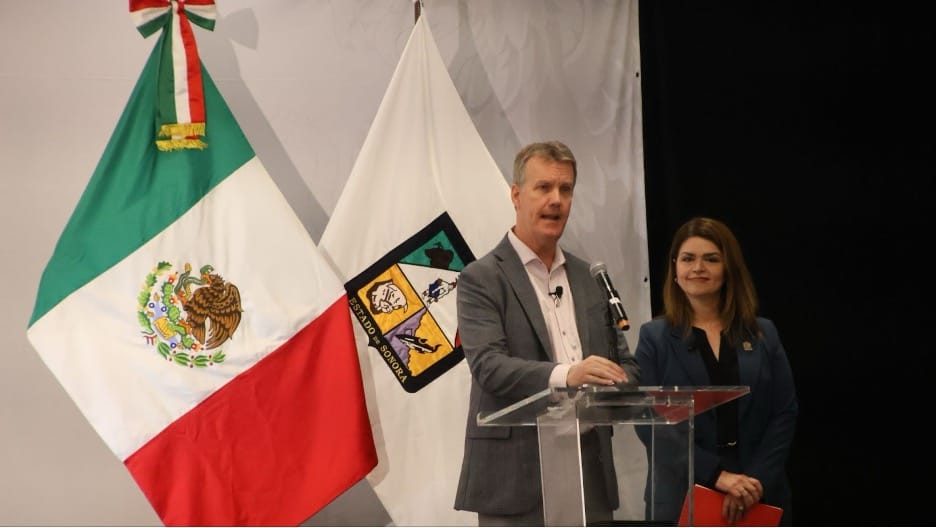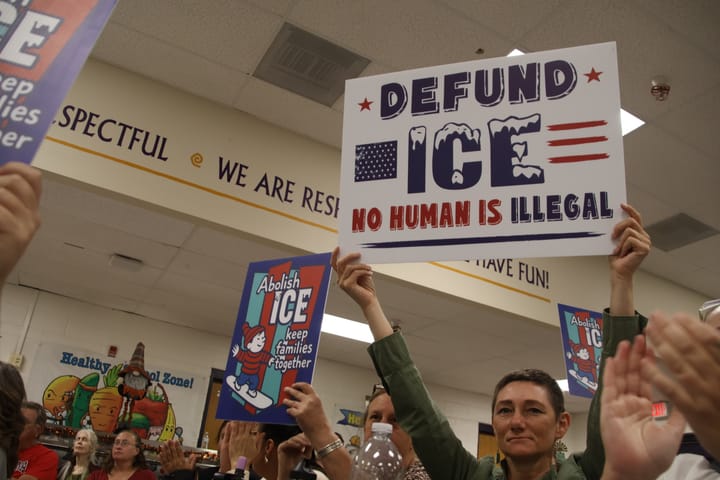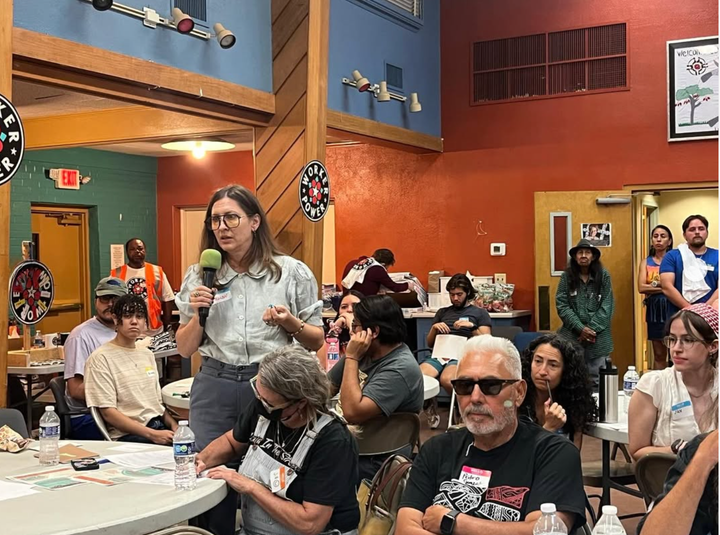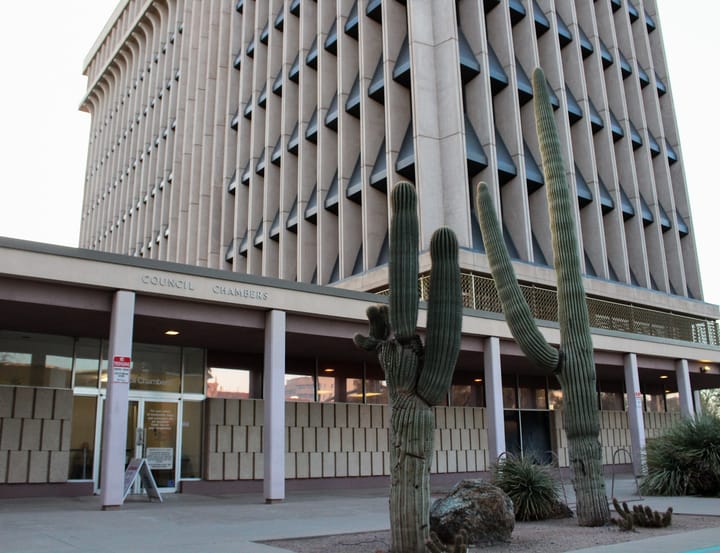Forum highlights cross-border collaboration on trade, workforce and sustainability
Leaders from Arizona and Sonora gathered in Tucson to strengthen cross-border partnerships on trade, workforce development, and sustainability.

Amid growing economic interdependence between the U.S. and Mexico, the 2025 Arizona-Sonora Economic Forum convened earlier this month in Tucson, spotlighting cross-border collaboration on trade, workforce development and sustainability.
Top officials from both regions, including Arizona Gov. Katie Hobbs and Sonora Gov. Alfonso Durazo, emphasized the shared economic future of the neighboring states, and the partnerships, academic exchanges and infrastructure investments that will shape it.
“Tucson is geographically blessed, being the closest, biggest city to the Mexican border. We are connected to the rest of the United States by rail, interstate and air,” said Mayor Regina Romero during opening remarks. “We understand that our economies are linked. Mexico is our most significant trading partner.”
Arizona’s largest import from Mexico is agricultural products, with the state receiving $3.6 billion worth of product last year, including tomatoes, cucumbers, peppers and cattle.
By comparison, Arizona’s largest export to Mexico was computer and electronic products. Mexico accepted $1.6 billion worth of copper ore and concentrates last year, to be used in sectors such as car manufacturing, renewable energy products and semiconductor chip production.
Pima County Supervisor Rex Scott said the county has been working to increase collaboration with the state of Sonora and beyond, including organizing and sponsoring events and visits to Mexico to strengthen relationships with private industry, government and business leaders.
The county would also like to create a foreign direct investment strategy that reinforces trade and investment while accounting for advocacy and direct cultural connection with Mexico, he said.
“Mexico is the United States’ number one trading partner, with combined trade volume exceeding $800 billion in 2024 trade. (This collaboration) has created many opportunities for both our countries, as has investment,” Scott said. “That's what makes events like this so important, especially in challenging, uncertain times.”
Both regions have plans to prioritize public-private partnerships, using public sector resources alongside private sector knowledge to increase innovative ideas while decreasing costs.
“Continuing to work together to develop these coordinated bi-national frameworks is going to make it easier for companies to invest across the border and so looking for opportunities to continue in that direction,” said Hobbs.
Sonoran Gov. Durazo said recruiting strong academic talent for clean energy projects, crucial mineral mining and water reclamation would drive public-private partnerships further.
“I believe we (should) work in-depth on the water crisis affecting both of our states,” Durazo said. “Both of our states, particularly Sonora, have had (been impacted) by a historic drought. It has us resorting to new reclamation mechanisms, (including) desalination and gray water (treatment).”
The Arizona Department of Water Resources, the Arizona Department of Environmental Quality and their Sonoran counterparts have all signed a memorandum of understanding to secure clean air and water resources.
Chip development is another area where partnerships between the two states remain strong, Hobbs said.
“Our program through Arizona State University has trained 10,000 students in Mexico in English, specific to this semiconductor industry,” she said.
Arizona was recently the recipient of a $165 million investment from the Taiwan Semiconductor Manufacturing Co. to support manufacturing, with Hobbs stressing the importance of the state’s relationship with Sonora in creating such opportunities for the region.
She said the U.S. trade war is an opportunity for both regions to show their strength in their sectors for further foreign investment, pointing to aerospace development and electric vehicle manufacturing as areas where the two economies are already closely intertwined.
“Sonora is the only producer of graphite in Mexico, and produces manganese, lithium and other fundamental minerals in the value chain of electro-mobility,” Durazo said.
Future plans include bolstering workforce development, partnerships in bilingual education and certification and apprenticeship programs, while also increasing collaboration with the education committee of the Arizona-Mexico Commission, Hobbs said.
“We have the workforce. It's why companies are seeking to start or grow here, but we know we have to be really strategic about ensuring that we're aligning that workforce with the opportunities that come with this growth,” she said.
Amistades President Claudia Jasso said the event left her feeling reassured about the economic future of both countries. Amistades is a Latino-led nonprofit that partners with the Southern Arizona Hispanic Chamber of Commerce to acknowledge the equity issues the Hispanic community has faced by providing culturally informed services.
“We wanted to come in and have a seat at the table and represent the families that we serve in Southern Arizona,” Jasso said. “The economy is something that directly impacts the people that we work with in the community. When we look at things holistically and look at the ecosystem of the economy, we know that we can't divorce that from the families that we serve.”
Sandra Franko, co-owner of La Estrella Bakery, said she’d like to develop a collaboration between her business and the state of Sonora, where her bakers can learn from Sonoran bakers, and vice versa.
“The whole idea about working together with businesses and with the state of Sonora and others around Arizona is to continue those connections with our community, and expand our business like we've been doing for the past 40 years,” Franko said. “That's something that we did not know that was available, and that can be possible. We're excited for that.”
Consul of Mexico Rafael Barceló said the forum surpassed his already high expectations and left him feeling hopeful about the future.
“The important part of a relationship is the local connections,” he said. “The core of the relationship between Mexico and the United States is based in the (exchange of) ideas, experiences (and) knowledge. Sonora and Arizona are a wonderful example.”
Topacio “Topaz” Servellon is a freelance journalist out of Tucson. Contact them at topacioserve@gmail.com.
Tucson Spotlight is a community-based newsroom that provides paid opportunities for students and rising journalists in Southern Arizona. Please support our work with a paid subscription.




